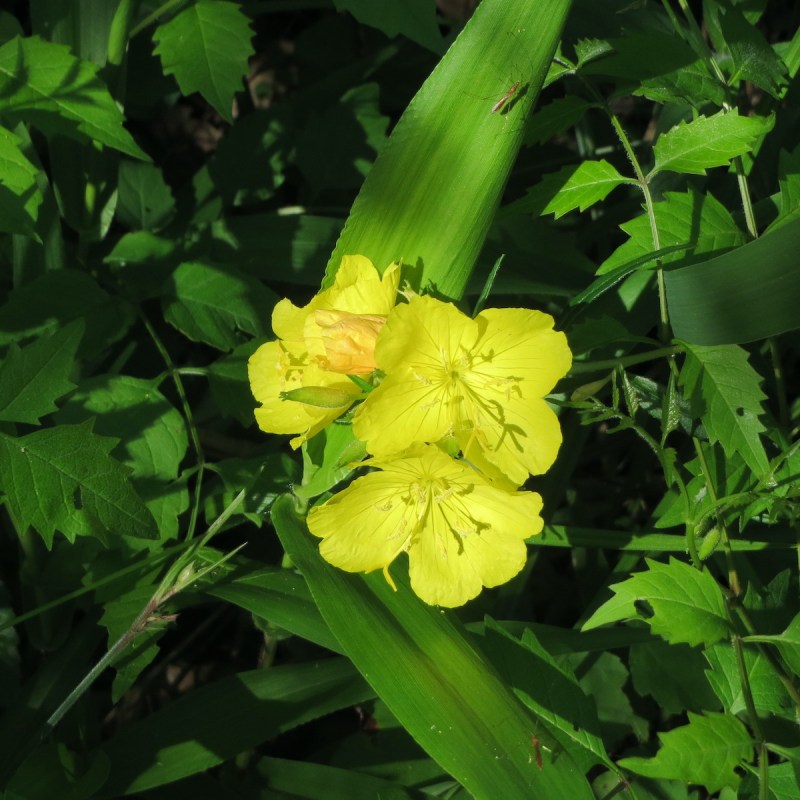
Tucked away in the northwest corner of Alabama is a 700-acre tract of land that has been described as one of the most fascinating and diverse areas in the state. Over the preserve’s 15 miles of hiking trails, you will experience some of the most remarkable canyon scenery in the state, spectacular ancient rock shelters, dozens of rumbling waterfalls, and rainbows of rare wildflowers in season. It’s all waiting for you at Cane Creek Canyon Nature Preserve in Tuscumbia.
Videos by TravelAwaits
One visit to the canyon will have you wanting to come back time and time again to further explore the nooks, crannies, and varied environments. Here are seven reasons that you will love visiting the wonders of Cane Creek Canyon Nature Preserve.

1. A History of Preservation
Former University of Alabama geology professor Jim Lacefield and his wife, Faye, purchased a small plot of land in 1976 in Tuscumbia, Alabama, knowing full well what the property to the north of their purchase held fascinating geology including a canyon that was carved out of the sandstone rock as an ancient ocean receded from the land thousands of years ago. The work continues to this day through the action of the elements.
Within the canyon that Native Americans once called home, the geologic history of the region was recorded, its ancient sand dunes etched into its walls. Waterfalls plummeted down the rock walls creating the perfect environment for beautiful and rare wildflowers to flourish.
The Lacefields built their home on the southern end of their original purchase, where they still live today. In 2000, the couple purchased an additional 400 acres from a lumber company to the north of their property and began the work of establishing over 15 miles of footpaths that lead to otherwise hard-to-access natural beauty.
The couple eventually opened the preserve to the public and today through a partnership with the Land Trust of North Alabama to help maintain and protect the preserve. Cane Creek Canyon is one of the most popular and rewarding hikes you can take in the state.

2. The View From The Point
After walking from the trailhead which is just down the dirt road from the Lacefields’ home, you will come to a beautiful overlook known as the Point.
Before heading down into the canyon, you get a view from this vantage point into the valley that was created thousands of years ago. No matter what season you hike the preserve, the view is impressive. On a clear day, you will be able to see mountains 6 miles away in the distance with no trace of civilization between you and those peaks.
The surrounding mountains are covered with lush greens in spring and summer, are ablaze in fiery colors in the fall, and are peaceful and quiet with a light dusting of snow in winter.

3. The Canyon Geology
Following the Point, you have a few options to head down into the canyon ranging from moderate to difficult climbs. Almost immediately as you make your way down, you will come to the first of many rock shelters. These are spectacular rock overhangs that jut out from the canyon wall, the base of the wall having been carved out over the centuries by the elements. Native Americans of the Mississippian period once used shelters like these for refuge, and artifacts can still be found within them. If you find any artifacts, you can look, but don’t touch. It is a federal crime to take any that you might find.
The first shelter you will come to features a tiered waterfall cascading down the overhanging rocks. A small path takes you behind the falls. Use caution; it is slippery.
Winding your way through the preserve, you will encounter many more shelters and towering sandstone bluffs, including the spectacular Yellow Wood Rock Shelter at the end of an area known as Devil’s Hollow. The shelter was so named because of a single strip of ground nearby where several yellow wood trees grow. These trees only grow in specific soils like those found at Cane Creek. The trees line up perfectly, clinging to a thin strip of their favorite nutrients.
Another amazing geologic formation is found on the Under Bluff Trail that will take you under huge rock overhangs that tower above you.

4. Waterfalls Abound
On the Cane Creek Canyon Preserve trail map, you will see that there are at least six beautiful waterfalls that tumble over the sandstone bluffs into the canyon. As mentioned earlier, almost immediately as you head down into the canyon, you are greeted by the first waterfall. Continuing on the Waterfall Loop Trail, you will encounter others – some of which are not on the map.
Most of the waterfalls are located on the north end of the preserve in the Devil’s Hollow and Johnson Wood areas, so it will take some hiking – a moderate trek of about 3 miles – to get to them, but well worth the effort. In this area, you will be treated to the soothing sounds of Johnson Falls, Yellow Wood Rock Shelter and Falls, Karen’s Falls, and Malone Branch Falls.
Keep in mind that waterfalls in Alabama are seasonal and may not be flowing during the heat of summer.

5. Rainbows Of Wildflowers
From spring through late summer, visitors and photographers alike flock to Cane Creek Canyon to view the spectacular array of wildflowers found there. Yellow Lady’s Slippers, Trout Lily, and thick stands of pink and white Mountain Laurel are common along the trails while many rare species including the Giant Columbo will be found.
One of the highlights for wildflower viewing will be found at the Boulder Garden where there is a field of large boulders. The top of each boulder is adorned with native grasses and a multitude of wildflowers.

6. Pure, Clear Streams And Creeks
The canyon is named for the creek that courses through the property, Cane Creek. The beautiful blue-green creek continues to help shape the preserve and maintain its biodiversity. At one point along its course, the creek pools, making a great little swimming hole in the hot and humid summer months.
There is a nice picnic area along the route – Linden Meadows – that’s the perfect place to stop, have lunch or a snack, and enjoy the creek. At the cement bridge here that crosses the creek, take a look into the water and you will see hundreds of small, black snails called periwinkles. This is a sign of how pure and clean the water is; the snails only flourish in the cleanest of water.

7. Pet-Friendly Trails
The trails at Cane Creek are pet-friendly. You must keep your pet on a leash, and of course, bring along those waste bags to clean up after them and keep the canyon pristine.
While walking the floor of the canyon is a moderate hike, depending on your route, you will encounter rocky, boulder-strewn fields and some climbs that may not be suitable for your pet. Use your best judgment as to what route your pet can handle when you visit.
Cane Creek Canyon Preserve Pro Tips
Cane Creek Canyon is open to the public Friday through Sunday, 7 a.m. to 5 p.m. You must sign a register when you arrive and when you leave to allow those who watch over the preserve to know who is on the trail and to ensure no one is left in the canyon upon closing.
There is no admission fee for exploring the canyon.
The trails range in difficulty from moderate to difficult. You can pick up a trail map at the trailhead. While there are several jugs of water placed around the trails for hikers to keep hydrated, always bring your own and make sure you have enough for a possible long day of hiking – it’s easy to lose track of time when you’re having this much fun exploring. Bring snacks, too.
The preserve has five primitive campsites available for group camping. You will find contact information on the Cane Creek Canyon Facebook page. They will be able to give you all of the details about camping at the preserve.
For more Alabama coverage, check out the following articles:

